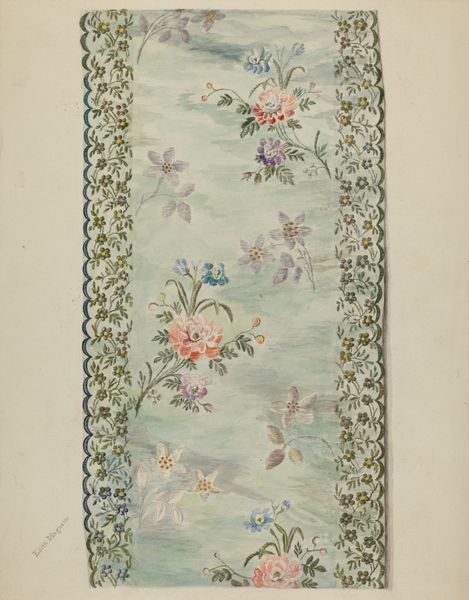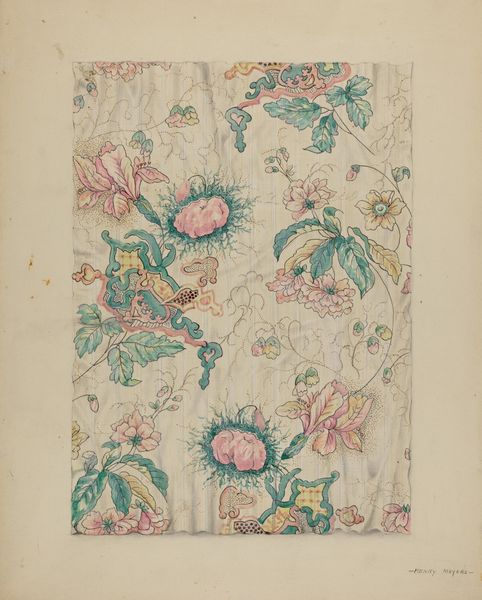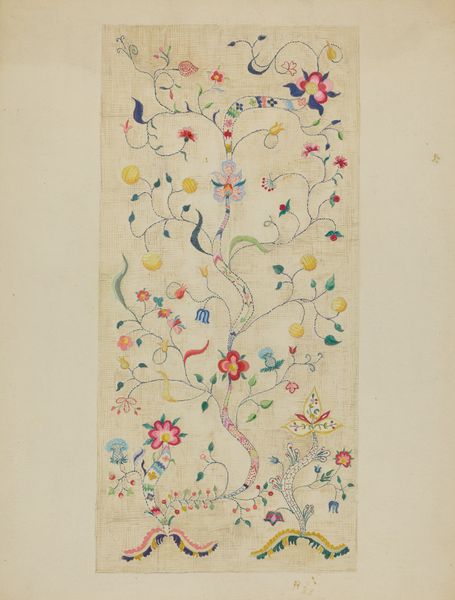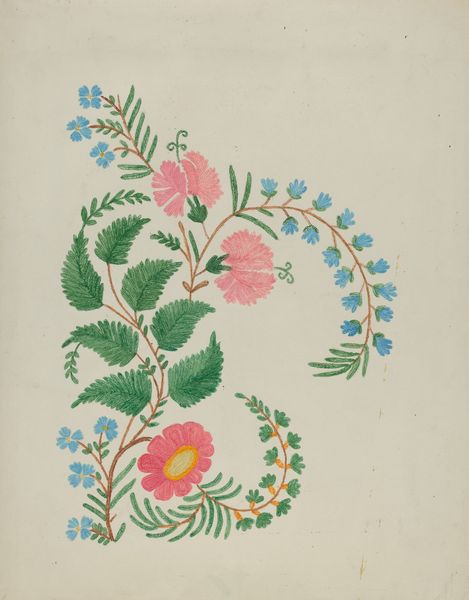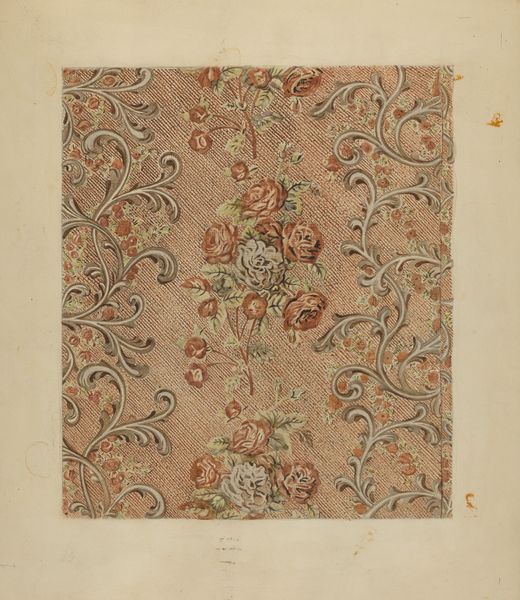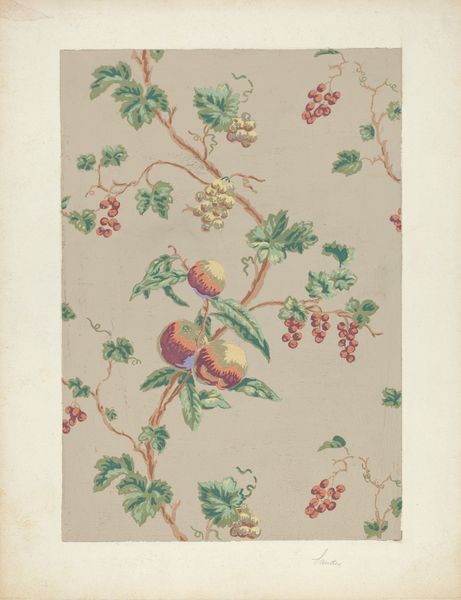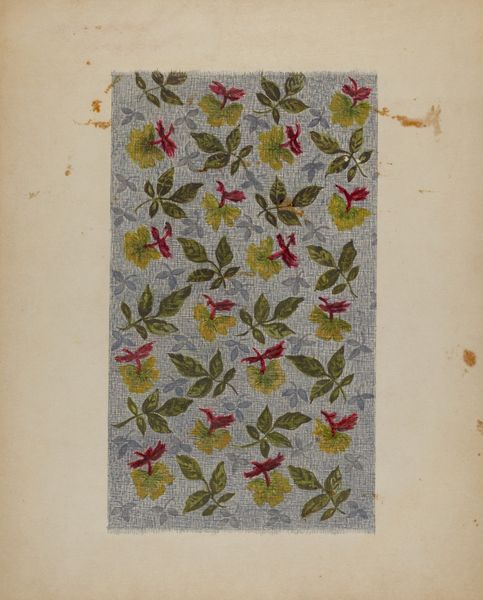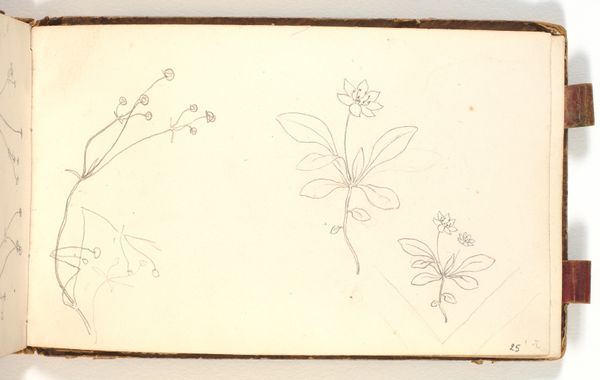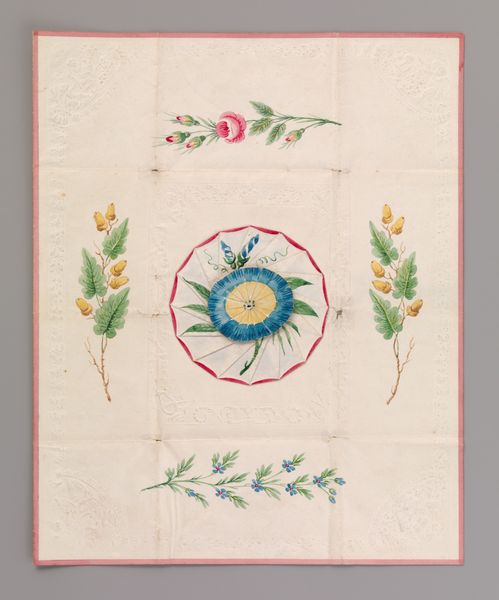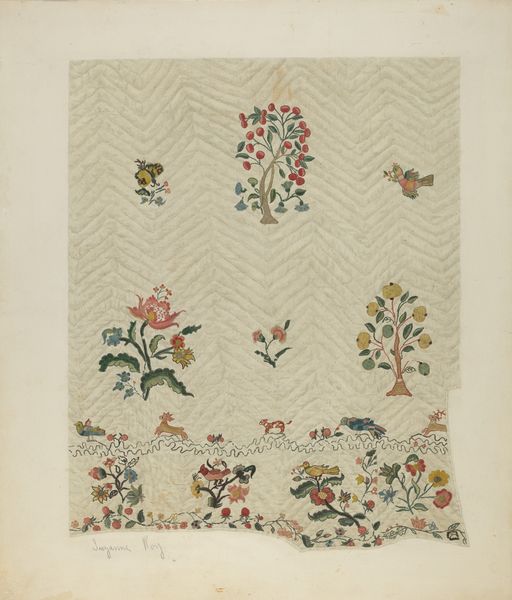
drawing
#
drawing
#
toned paper
#
pottery
#
cake food
#
wood background
#
culinary art
#
stoneware
#
coffee painting
#
watercolour bleed
#
watercolour illustration
#
watercolor
Dimensions: 108 mm (height) x 177 mm (width) (bladmaal)
Curator: This delicate drawing is entitled "Studies of Roses and a Rose Branch," rendered in 1848 by P.C. Skovgaard. Editor: It feels like a page torn from a cherished botanical diary, a pressed flower collection imbued with watercolor hues. There’s such a lightness, a sense of transient beauty caught in time. Curator: Indeed. The seemingly informal arrangement—almost scattered—might reflect a burgeoning Realist aesthetic moving away from the grand, formal compositions so prized before. The roses become specimens for study rather than symbolic objects. The toning of the paper, it speaks to the material conditions, too. Editor: It makes me consider the position of women and flowers in that era, almost analogous, both representing a particular kind of delicate, transient beauty, often cultivated for the male gaze. Is Skovgaard simply rendering nature or is there something more going on with that association, too? The rose can symbolize passion, romance, the feminine, and even resistance depending on context. What is he telling us? Curator: He could very well be referencing traditional vanitas painting—rose are, after all, fleeting. He may also allude to earlier traditions of emblem books where plants possessed certain moral and spiritual connotations. Here, it seems subdued, personal, even a little melancholic. Perhaps Skovgaard is quietly meditating on ideas surrounding time and beauty with roses acting as symbols of life's temporal quality. Editor: Melancholy is a great descriptor! Viewing this through a more contemporary lens, it underscores the importance of representing natural beauty during a time of massive ecological crisis. Highlighting the transient essence of these blossoms urges us to protect the delicate equilibrium of our planet, encouraging ecological responsibility in place of aesthetic fascination. Curator: That's an interesting position, taking an historical work into future imperatives and ecological imperatives that were so far away at that point in time. I agree it does add another dimension to how we can now engage with this study today, as viewers, Editor: Exactly. An 1848 drawing inspiring change. It’s a wonderful intersection of history and present. Curator: Agreed. It prompts us to see symbolic depth where we first observed aesthetic charm.
Comments
No comments
Be the first to comment and join the conversation on the ultimate creative platform.
